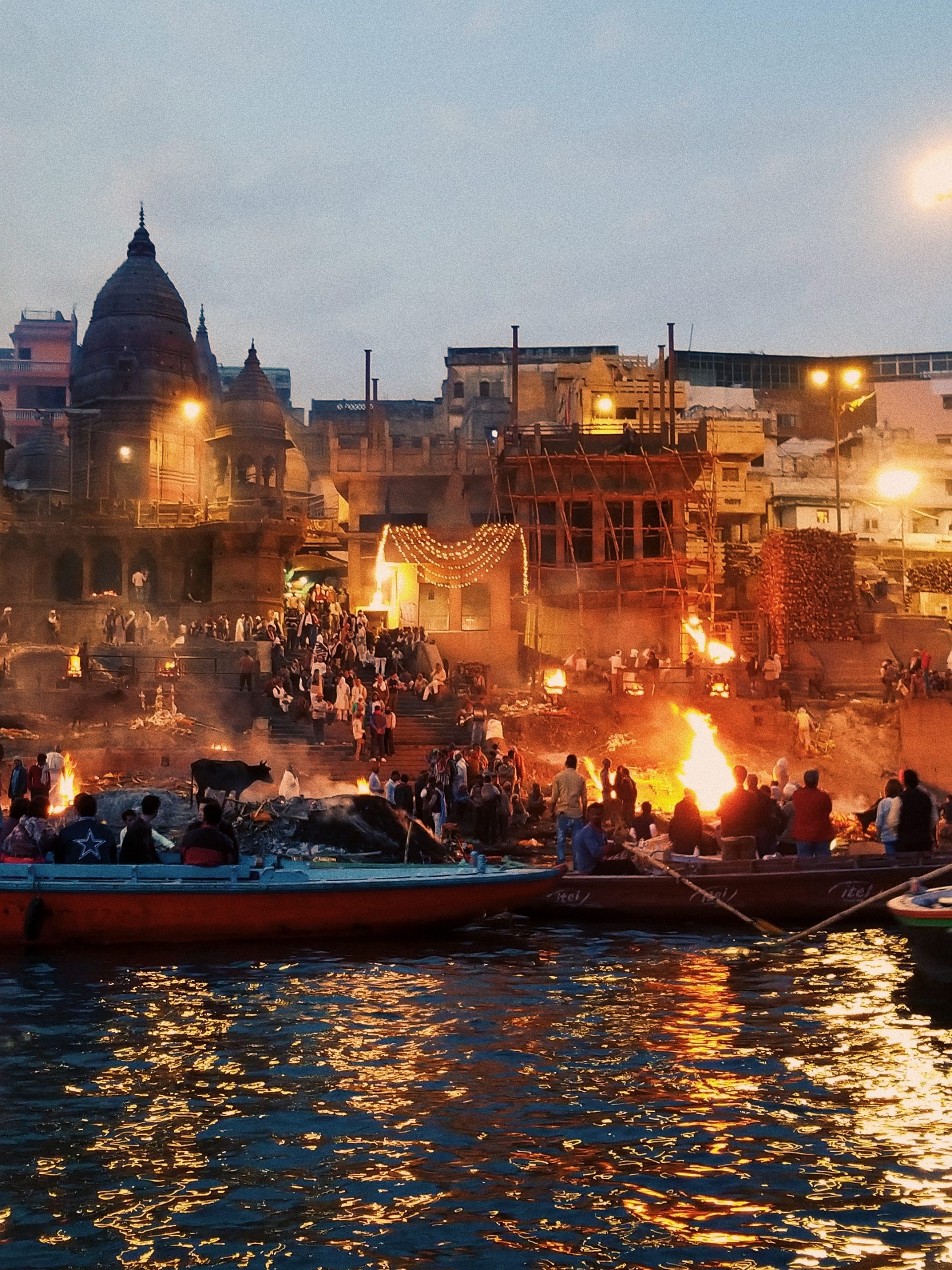Note: This is an ante-dated post (actual date of events)
February 12-13, 2018. It is both a disturbing and a solemn experience to witness burning bodies as you walk along either of the two ghats (stepped segments on the river bank) dedicated to the cremation ritual along the Ganges. Hindus believe that the Ganges, particularly in Varanasi, is the most sacred place to die, and that cremation along its banks breaks the never-ending cycle of life, death and tragedy and delivers one’s soul to moksha.
As a matter of fact, some Hindu families prepare for the expected deaths of loved ones in Varanasi for the purpose of having their relatives fatefully die in this sacred place. Some Hindu individuals who feel like they are near their deaths, travel to the city and lodge at hospices near the river especially established for those who wish to make their death beds, waiting for the day they perish.

During one of my boat rides along the Ganges, I took photos of the ghats where the cremations were held. Once we got closer to where the burning bodies were, I was rightfully berated by some of the boatmen for taking photos. I was sincerely ashamed for being the disrespectful tourist I thought I avoided being. These are solemn rituals with grieving families that deserve respect.


At dusk until evening, Brahmin disciples perform a prayer ritual called aarti to thousands of devotees and spectators along the river banks. Some also offer flower candles to the river, which by itself is a Hindu deity.





